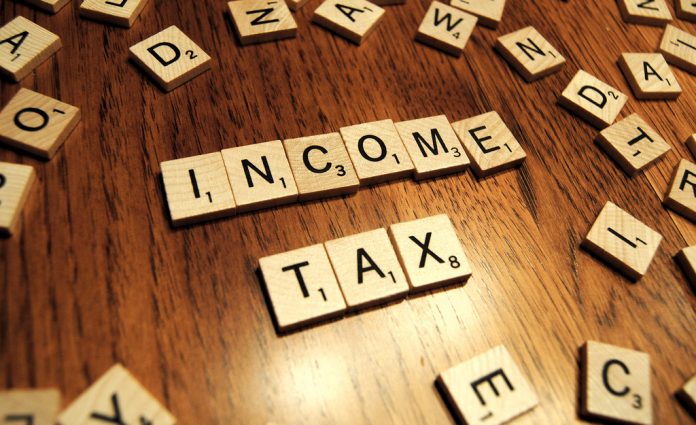This article has been written by Naveen Talawar, a law student at Karnataka State Law University’s law school. The article discusses Section 143(1) of the Income Tax Act, 1961 in detail.
This article has been published by Sneha Mahawar.
Table of Contents
Introduction
When a person receives a notice from the income tax department, there appears an immense sense of nervousness that goes along with it. Mere looking at such envelopes may bring thoughts of impending fines, adding stress to daily life. However, not all notices contain bad news. While some of them bear good news, such as tax refunds and others are more of an announcement or statement of facts with no positive or negative implications. One such notice is the intimation under Section 143 (1) of the Income Tax Act, 1961 (“the Act”).
What is assessment
Every taxpayer is required to furnish the details about their income to the income tax department. These details are to be furnished by providing the details about his income in the form of a tax return. Further, the income tax department processes the income tax return filed by the taxpayer and examines the correctness of the income return. The process of examining the return of income by the income tax department is called assessment. This preliminary assessment is also known as a summary assessment. The process of the preliminary assessment, which is fully automated and computerized, is delegated to the Central Processing Centre (CPC).
Centralised processing centre
Due to the rapid increase in the number of income tax returns and the jurisdiction-based processing model used for all of the returns filed, the tax department faced many issues which caused the delay in processing the income tax returns. Therefore, the Central Board of Direct Taxes (CBDT) was empowered by the Finance Act, 2008, to create a scheme for the centralised processing of returns with the aim of determining the tax due from or the refund owed to the taxpayers. The department, based on the recommendations of the technical advisory group, decided to use a centralised processing centre in Bangalore to process paper and electronic returns without interacting with taxpayers and in a jurisdiction-free manner.
The returns of the assessee are then processed by the centralised processing centre in Bangalore without any involvement of the taxpayer or the jurisdictional officer. Once the processing is complete, the department then sends an intimation to the taxpayer. This intimation provides the taxpayer with an opportunity to respond to the department. The response will be against the adjustment made by the centralised processing centre in the intimation. The taxpayer has to respond to the adjustment within 30 days from the date of the communication. If the taxpayer fails to respond to the department within that period, then the department proceeds with the adjustments.
Scope of Section 143(1) of Income Tax Act
The process of filing an income tax return (ITR) is not finalized at the verification stage once the information has been confirmed by the income tax department. As soon as a person verifies their tax returns, the income tax department starts processing the ITR. Following the processing of the ITR, the income tax department issues an intimation notice. This intimation notice is sent in accordance with Section 143(1) of the Act, 1961 to draw attention to any discrepancy that may have resulted from paying less tax than what was intended to be paid. In case less tax is paid, the taxpayer is obligated to pay the balance amount and resolve the issue. And in cases where the excess amount is paid, the department will transfer the tax refund to the bank account of the assessee, which is linked specifically for this purpose. The notice for the same will be delivered by the tax department to the taxpayer’s email ID. Further, an SMS will also be sent to the taxpayer’s registered phone number informing them that the notification has been sent to their email ID.
Generally, this kind of notification will be a computer-generated message which states any errors made or any interest found to be payable or refundable. These notifications are frequently sent through email within one year of the fiscal year in which the return was filed and there is no human intervention in the creation of this message.
The Madras High Court while determining the case filed by the co-operative societies questioning the validity of the orders of assessment passed by the assessing officer in Veerappampalayam Primary Agricultural Cooperative Credit Society Limited v. DCIT observed that “the scope of an intimation under Section 143(1)(a) of the Act extends to the making of adjustments based upon the errors which are apparent from the return of the income on record”. Further, it was observed by the court that an apparent incorrect claim can be disallowed while processing a return under section 143(1)(a) of the Act.
Contents of the intimation notice
The intimation notice under Section 143(1) could consist either of the following:
- When the income details, deductions claimed and tax calculations match with the assessment and calculations made by the tax department: This type of intimation notice will show that there is no additional tax payable by the taxpayer. Further, both tax payable and refundable will be shown as zero in the notice.
- Additional tax demand: There may be certain situations where a taxpayer has to pay an additional amount if he fails to report a particular income on his income tax return, or has wrongly claimed deductions, or calculated his taxes incorrectly in such situations, the taxpayer has to pay an additional amount. In such cases, the tax department sends him an assessment and demands the additional tax amount along with interest.
- Income tax refund: After the assessment of the income tax department, if the taxpayer has paid the additional tax as compared to his actual liability, then in such situations income tax refund will be shown as due in the intimation notice.
Adjustments under Section 143 (1) of the Income Tax Act
When the taxpayer files a return under Section 139, an intimation will be sent to the assessee if any unpaid interest or tax is found due. The same is also applicable if the assessee is entitled to any refunds. This usually happens when the tax that has already been paid by the taxpayer is in excess of the amount which was required to be paid. The total income of an assessee is calculated under Section 143(1) of the Income Tax Act after making the following adjustments:
- Any arithmetical error in the filed return.
- If any information in the return is an incorrect claim.
- Disallowances of the loss claimed if a return from the previous year for which a set-off is sought was filed after the deadline.
- Disallowances of expenses are mentioned in the audit report but not in the income tax return.
- Disallowance of the deductions if the return has been filed after the specified date under Section 139(1) which are claimed under Sections 10AA, 80IA to 80-IE.
- Further, while computing the total income in the return the addition of income appearing in Form 26AS, Form 16A, or Form 16 is not included.
The assessee will be given an opportunity to respond to the changes proposed by the department before making any such adjustments.
An incorrect claim under this Section means a claim on the basis of an entry in the return,
- Which includes an item that is inconsistent with another entry of the same or some other item in the return.
- Where the information which is necessary to be provided under this Act to substantiate such entry has not been provided.
- With respect to a deduction that exceeds the specified statutory limit that may have been expressed as the monetary amount or percentage or ratio.
Assessment procedure under Section 143(1) of Income Tax Act
- After the correction of any arithmetical errors or incorrect claims, as mentioned above, the tax, interest and fee (if any) shall be computed based on the adjusted income.
- The taxpayer has to be informed of any amount due or refund that is owed to him. The amount determined to be payable to the taxpayer or the amount of a refund due to the taxpayer must be specified in an intimation that is prepared or generated and sent to the taxpayer. The taxpayer must also receive notification if the loss reported in his income tax return is changed but no additional tax, interest, or refund is owed to him.
- If there is no amount due from the assessee or no refund is due or no adjustment is made to the returned income, the acknowledgement of the return of income is regarded as the intimation.
- Section 234F of the Income Tax Act, 1961 provides that a fee will be levied if the income tax return is not furnished within the specified period as prescribed under Section 139(1). A fee of Rs. 5,000 will be charged if the income tax return is submitted after the deadline prescribed in section 139 (1). If the total income of the assessee is less than Rs. 5 lakhs then the amount is Rs. 1,000.
Kinds of intimations under Section 143(1) of Income Tax Act
The possible kinds of intimation under Section 143(1) of the Income Tax Act, 1961 are as follows
Intimation with no demand or no refund
This kind of intimation is generally issued when the department has accepted the income tax return without carrying out any adjustments to it.
Intimation determining demand
This kind of intimation is issued when the department finds any discrepancy and tax liability with regard to the tax return in case any adjustments are made under Section 143(1) of the Income Tax Act, 1961.
Intimation determining refund
This intimation is issued when the department determines that there is tax to be refunded. Where no discrepancy in the return is found, a refund check may be issued either without adjustments as described in Section 143(1) or after adjustments and after providing credit for taxes and interest paid by the taxpayer.
When does one receive intimation under Section 143(1) of the Income Tax Act
An intimation under Section 143(1) of the Income Tax Act may be generated for a number of reasons, which include the following:
- The amount of tax that was paid by the taxpayer is more than what they were actually liable to pay in accordance with the provisions of the Income Tax Act, 1961. The intimation notice will mention the amount of the tax refund. If the total amount of the refund is more than Rs. 100, then the taxpayer will get the refund, whereas if the refund amount is less than Rs 100 then there will be no refund.
- The taxpayer has paid taxes which are short-paid based on his actual liability. In such a situation, the intimation notice will include the balance to be paid by the taxpayer. This will include both the actual liability and the interest component.
- A simple notice states that the tax returns concur with the calculation of the assessment officer. In this case, an intimation notice is not necessary to inform the assessee.
What can a taxpayer do if they receive a notice under Section 143(1) of the Income Tax Act
The taxpayer can take the following actions after receiving notice under Section 143(1):
- The taxpayer has to determine the reason for sending a notice.
- The taxpayer has to check the particulars mentioned (such as name and PAN number) whether it is for him or to the other person with a similar name.
- The taxpayer has to record the time and receipt of the notice and must respond to it within the specified time in order to avoid fines and legal action.
Conclusion
Intimation notice received under Section 143(1) of the Act is not just a notice but a communication received from the income tax department. The department under Section 143(1) of the said Act sends the intimation notice to the registered email address of the taxpayer. Further, the department notifies the taxpayer through SMS, informing them that the notification has been delivered to their registered email address.
A preliminary assessment is made by the income tax department after the assessee files his income tax return. This includes verifying arithmetic errors, any incorrect claims contained in the return, discrepancies in the tax calculation, verification of tax payment, etc. This notice basically compares the computations made by the income tax department with that of the income tax return. The taxpayer need not worry if both calculations match. However, if there is a mismatch, the taxpayer must take the necessary steps to resolve the same.
Frequently asked questions
Is an intimation under Section 143 (1) an assessment order?
No, the intimation under Section 143 (1) is not an assessment order. It is an automated response and involves no human intervention. It was observed by the Supreme Court in ACIT v. Rajesh Jhaveri Stock Brokers P. Ltd that an intimation under Section 143(1) of the Act could not be treated as an order of assessment.
What is the time limit for the issue of intimation under Section 143(1)?
The intimation under Section 143(1) has to be sent to the assessee within one year from the end of the financial year.
How to open an intimation under Section 143(1) received in the mail?
The intimation received under Section 143(1) in the mail will be password protected. The password will be the taxpayer’s PAN in lowercase followed by the date of birth format without giving any space. Such instructions are also clearly written in the email that carries the notice.
References
- https://cleartax.in/s/section-143-1-it-act
- https://www.outlookindia.com/business/
- https://economictimes.indiatimes.com/wealth/tax/how-to-read-income-tax-intimation-notice-under-section-1431/articleshow/86753082.cms
- https://scripbox.com/tax/section-143-1-of-income-tax/
- https://www.goodreturns.in//articlecontent-pf50510-1271343.html
Students of Lawsikho courses regularly produce writing assignments and work on practical exercises as a part of their coursework and develop themselves in real-life practical skills.
LawSikho has created a telegram group for exchanging legal knowledge, referrals, and various opportunities. You can click on this link and join:
Follow us on Instagram and subscribe to our YouTube channel for more amazing legal content.
 Serato DJ Crack 2025Serato DJ PRO Crack
Serato DJ Crack 2025Serato DJ PRO Crack












 Allow notifications
Allow notifications



